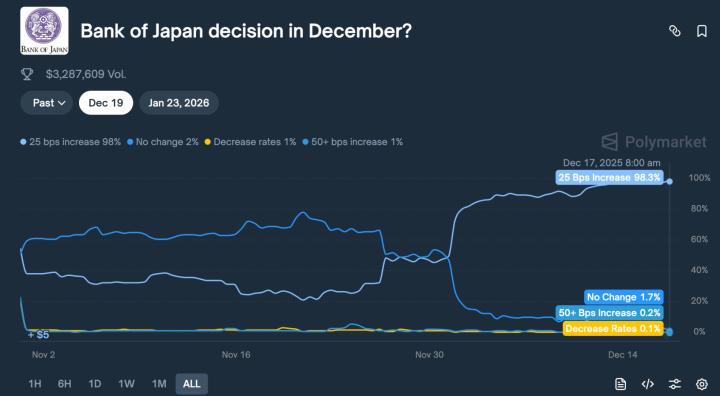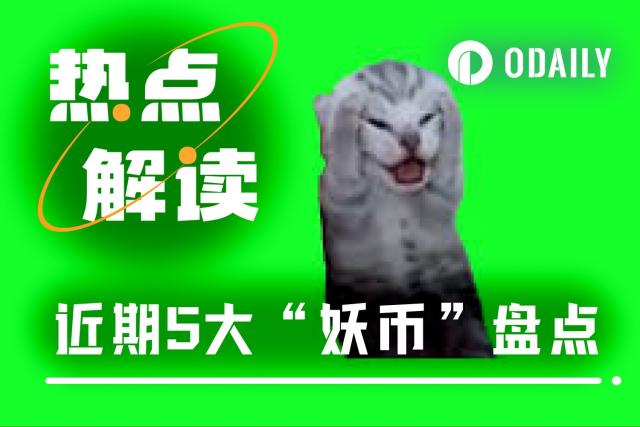On January 17, UXLINK announced the launch of its first Web3 social-native and growth-focused chain, UXLINK ONE Chain. The testnet is currently online for developers to apply for use: https://sepolia.uxlinkone.com/.
UXLINK ONE is an essential part of the Social Growth Layer, built on top of Optimistic Rollup, inheriting its scalability and efficiency, while introducing unique innovative solutions: comprehensive social account abstraction and a native cross-chain framework.
UXLINK's mission is to connect Web2 users with the infinite possibilities of Web3, which seamlessly aligns with this transformative concept. UXLINK ONE aims to eliminate these barriers by providing a unified access point, enabling cross-chain interoperability, and allowing Dapps to operate seamlessly across multiple blockchain ecosystems.
This issue will feature a dialogue with UXLINK ONE project leaders Rolland Saf and Akiya Hiro, exploring the innovations and changes that UXLINK One Chain will bring to the industry.
Q1: As a new generation of blockchain infrastructure, what is your unique positioning in the integration of SocialFi and Web3 infrastructure? What are your advantages compared to similar projects?
A: The positioning of UXLINK One can be summarized as a "user-centric chain abstraction public chain". We hope to use chain abstraction and account abstraction technology to allow users to easily enjoy the convenience and value brought by Web3 applications, without needing to worry about the underlying complexity.
In the SocialFi scenario, the role of chain abstraction is particularly important, as on-chain social interactions involve high-frequency interactions and incentive mechanisms, which are the bottleneck of traditional blockchain experiences.
Compared to similar projects, the biggest difference of UXLINK One is that we are not just a high-performance public chain, but a unified entry point for a cross-chain ecosystem.
We hide the complexity of multi-chain operations in the underlying layer, allowing users to complete cross-chain operations seamlessly with just one account, and directly use UXLINK Token as the gas fee. For this, we have proposed the OAOG Protocol concept. We have also found a balance between user experience and developer friendliness, providing stronger landing capabilities for SocialFi, PayFi, and Dapps.
Q2: UXLINK One mentioned the realization of "multi-chain support with a single account" and "one-click payment"; that is, the OAOG (One Account One Gas) Protocol. What innovative technology stack have you adopted behind these technologies?
A: To realize these functions, we have innovated in multiple aspects on the technology side.
First is the Account Abstraction technology, which allows user accounts to no longer be limited to a specific public chain, but can freely operate across multiple chains.
Secondly, the universal payment engine supports users using UXLINK Token as the Gas fee. Users only need to use UXLINK Token as the payment fee conversion mechanism to complete transactions, even if they do not have the Gas token of the target chain.
In addition, we have also adopted an optimized cross-chain communication protocol to ensure the real-time and security of asset and data circulation across multiple chains.
Finally, we have developed an L2 framework based on the Optimism Stake architecture, which guarantees the high performance and low-cost transactions of the chain, while also taking into account the scalability and security of the system.
Q3: UXLINK One recently mentioned Chain Abstraction, what is the relationship between the two?
A: Chain Abstraction can be seen as a bridge connecting users and the complex underlying blockchain. Its core idea is to make the diversity of blockchains transparent to users, so that no matter which chain's applications users use, they can achieve seamless operation through UXLINK One.
In the SocialFi scenario, this capability is particularly crucial. For example, when a user authorizes login, transfers payment, deposits and withdraws, and interacts to purchase NFTs in a Dapp, the traditional blockchain system requires them to understand wallet management, account address management, network switching, Gas token management, and other complex operations. The introduction of chain abstraction makes these operations "transparent".
Users only need to naturally engage in social interactions as they would on a Web2 platform, and the underlying cross-chain communication, payment, and settlement will be handled by us. This model not only reduces the user threshold, but also significantly improves the user retention rate and conversion rate of Dapps.
For the Solana ecosystem, TRON ecosystem, BTC ecosystem, through chain abstraction, we can support not only Ethereum ecosystem projects. All on-chain data will also be stored on UXLINK One, which will make the entire on-chain data transparent and more secure.
Q4: How do you view the trade-offs between Optimistic Rollup and zkRollup in terms of performance, scalability, and developer friendliness? Why did UXLINK ultimately choose the former?
A: From the technical architecture perspective, OPStack provides a modularized framework that has been proven in practice. It not only fully compatible with the Ethereum ecosystem, but also allows us to customize the underlying logic of the chain according to business needs. This flexibility means we can create unique functional features while maintaining compatibility.
From the development efficiency perspective, OPStack achieves an ideal balance between technical complexity and performance. Compared to the large computational resources and complex proof generation process required by zk-Rollup solutions, OPStack is more suitable for our current technical investment, with a more mature and simple architecture, helping us to quickly launch and verify products to meet the needs of the current business stage.
Currently, high-profile projects such as Sonic (S), Worldcoin (WLD), and Unichain have all chosen to build based on the OP Superchain. These successful cases targeting consumer-level applications fully demonstrate the market's recognition of the stability and maturity of OPStack technology.
More importantly, OPStack reserves ample space for future technological evolution. Its modular design allows us to seamlessly integrate innovative solutions like ZK technology in the future, ensuring our technical architecture has the potential for continuous development.
This balance between meeting current needs and future expansion is the ideal choice for our technology selection. It can not only support our rapid verification of business models, but also does not limit the future technology upgrade path.
Q 5: In the blockchain industry, many public chains tend to be more developer-centric in their design, while UXLINK One chooses to design the chain architecture from the perspective of end-users. What is the reason behind this approach?
A: We have always believed that the ultimate value of Web3 technology lies in serving users, rather than staying at the technology itself. If developers are the core driving force for ecosystem building, then users are the key to determining whether the entire ecosystem can develop sustainably in the long run.
The design approach starting from the end-user perspective allows us to focus more on solving user pain points, such as the cumbersome multi-chain switching, the opaque Gas fees, and the high operating thresholds. We hope to fundamentally change the way users interact with blockchains through chain abstraction technology, making the Web3 user experience on par with or even surpassing Web2.
This user-first approach has also helped us attract more developers who are willing to serve the mass market. These developers can not only build Dapps faster, but also directly benefit from the optimization of user experience, which brings higher conversion rates and longer life cycles. They can even contribute to the underdeveloped payment areas of some countries and cities, and bring inclusive finance through the Web3 approach.
Q 6: Currently, there are several consumer-oriented chains emerging in the industry, such as Abstraction Chain. How is UXLINK One different from these chains? What are your unique advantages?
A: The biggest difference between UXLINK One and other consumer-oriented chains is that we are not designed for a single scenario, but aim to provide services for the entire multi-chain ecosystem.
Chains like Abstraction Chain are indeed exploring the direction of account abstraction and user-friendliness, but they usually only focus on a single chain or specific scenario, such as adopting ZKStake and focusing more on data privacy. In contrast, we take a full-chain perspective to build a true multi-chain entry point.
Our chain abstraction technology is not only applicable to SocialFi, but also supports payment, NFT trading, DeFi, and other high-frequency use cases. At the same time, our One Gas payment function and One Account system also provide greater convenience for users and developers.
It can be said that UXLINK One is not only a consumer-friendly chain, but also a developer-friendly chain. Through our tool chain, developers can quickly build applications without reinventing the wheel.
Q 7: In the blockchain field, how to balance user-friendly interaction experience while ensuring chain performance and security is a huge challenge. How does UXLINK One achieve this balance?
A: Balancing consumer experience, chain performance, and security is one of the core goals in the design of UXLINK One. We have approached it from the following aspects:
First, the high-performance architecture. UXLINK One is developed based on Optimistic Rollup, which not only gives us high throughput and low latency transaction capabilities, but also ensures the scalability of the chain. This architecture allows us to provide a smooth user experience for high-frequency interaction scenarios, while significantly reducing Gas costs.
Secondly, the multi-level scalability design. We have adopted a strict verification mechanism in cross-chain communication, and reduced potential security risks through the multi-layer protection strategy of smart contracts. In addition, we have also introduced an on-chain real-time monitoring and dynamic risk control system, which can quickly detect and respond to abnormal behaviors, ensuring the overall security of the ecosystem.
Finally, the optimization of the user experience. Through Account Abstraction, we have hidden the complex blockchain operations in the underlying layer, allowing users to operate without switching networks or managing different Gas tokens on different chains. Users don't even need to know about having a wallet address. Users only see an intuitive "one-click operation", while the complex processes of cross-chain payment and data transmission are automatically handled by the system. On the premise of ensuring the stability of the underlying technology, this seamless interaction provides users with a smooth experience comparable to Web2.
We believe that through the coordinated design of architectural performance, security mechanisms, and user experience, UXLINK One can bring more comprehensive and higher-quality blockchain services to users and developers.







